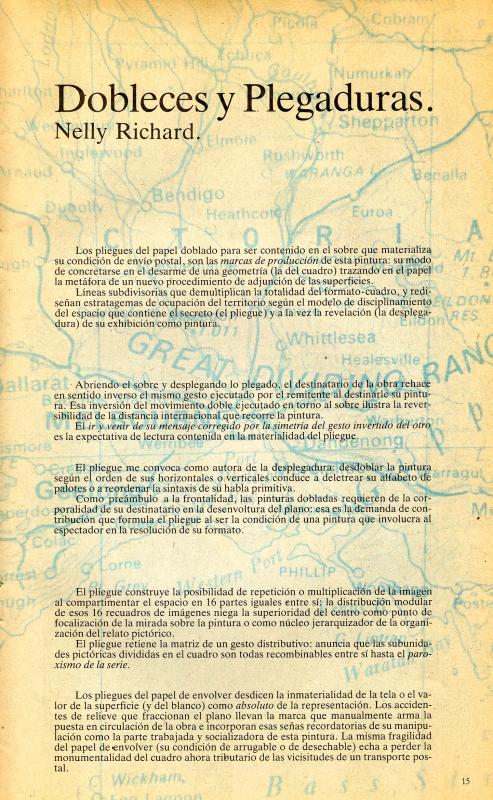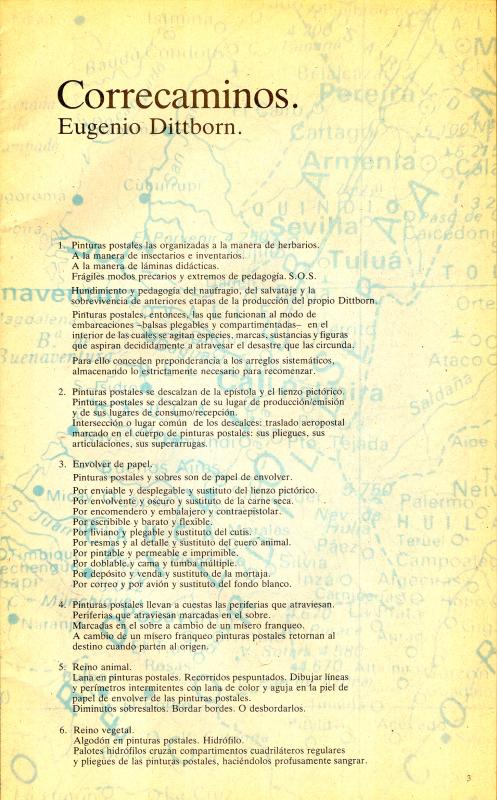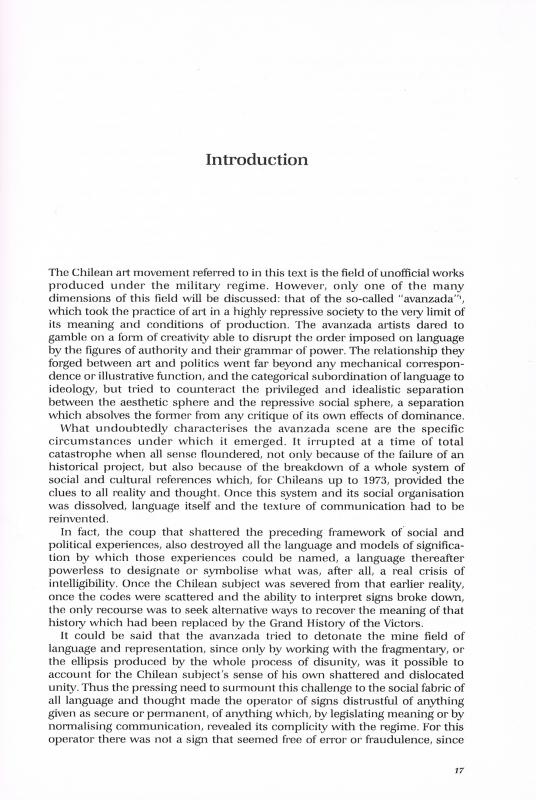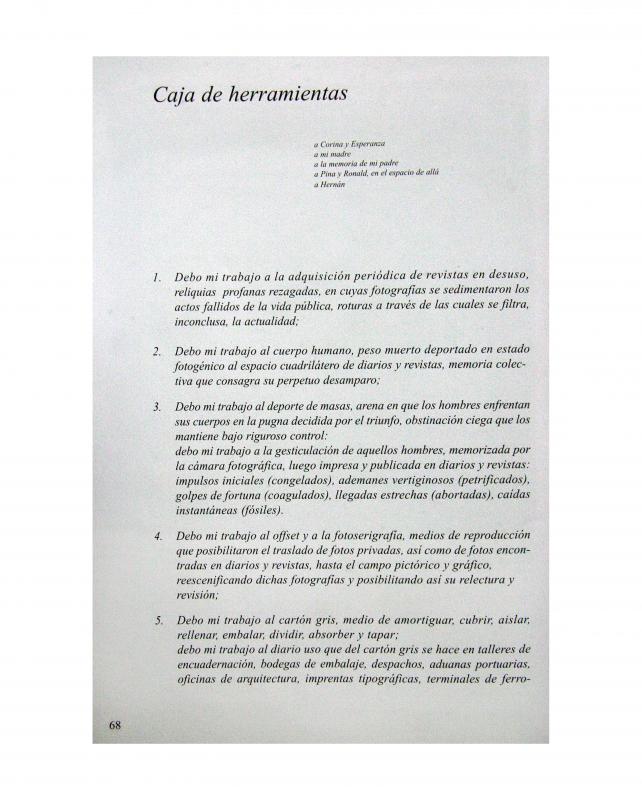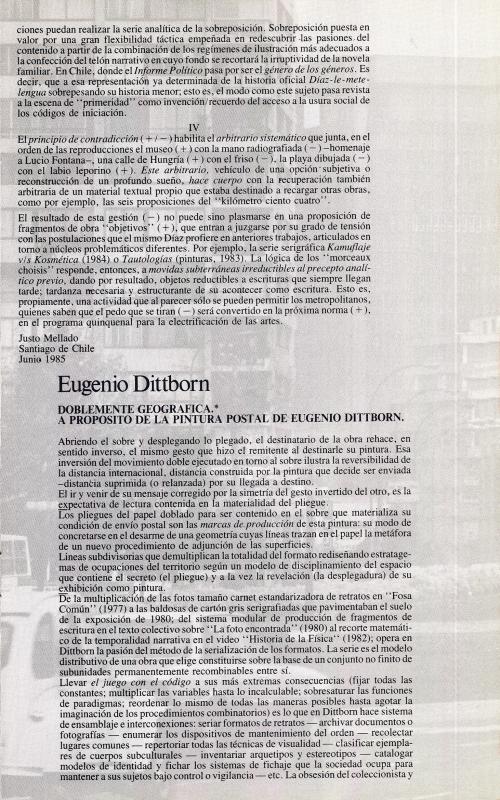“Dobleces y plegaduras” is a short essay by the theorist and cultural critic Nelly Richard (b. 1948) about the unprecedented pictorial process created by Eugenio Dittborn (b. 1943). The essay appeared in the publication Pinturas postales de Eugenio Dittborn (1985) [Airmail Paintings by Eugenio Dittborn (1985)], edited by Francisco Zegers, that included the first press articles about Dittborn’s work, published at almost exactly the same time. In addition to Richard, other participants in the book included the poets Gonzalo Millán (1947–2006) and Gonzalo Muñoz (b. 1956), the intellectual Pablo Oyarzún (b. 1950), and the artist. [To view some of these texts, see the following in the ICAA Digital Archive: “Por miradas” (doc. no. 735231) by Millán; “Una política” (doc. no. 735205) and “Protocollage de lectura” (doc. no. 735197) by Oyarzún; see also “Dobleces y plegaduras” (doc. no. 735222) by Richard and “Correcaminos” (doc. no. 735214) by Dittborn].
The publication appeared a year after Dittborn launched his pictorial project. Underscoring the fact that it was an itinerant production, his airmail paintings were presented in Cali, Colombia; Sydney, Australia; and Buenos Aires, Argentina in 1984 and 1985. After those journeys and the subsequent returns to Chile, they were shown at two exhibitions in Santiago: 12 pinturas aeropostales (Galería Sur, September) and 6 pinturas aeropostales (Galería Bucci, October).
Dittborn’s airmail paintings are large sheets of paper or fabric that were folded up to be inserted in envelopes that are part of the work. When the envelope was ready, the airmail paintings were sent by mail to the venue where the exhibition was to be held. On arrival, they were unfolded and hung on a wall. The envelopes were displayed beside the works, thus showing the details of the artwork’s journey: postage stamps, addressee, and sender’s address. The folds in the fabric (which created a grid of squares) and the lack of a stretcher were two features that contrasted airmail paintings with traditional paintings. The airmail paintings usually included photo screenprints of images taken from newspapers, magazines, comics, and drawing manuals, as well as lines, marks or drawings created by children. There were faces and iconographies from a variety of sources (including police archives). As regards the materials used, there were overlapping fabrics that had been patched and sewn. These are production methods that Dittborn continues to explore to this day; they are part of the pictorial critique that a number of artists developed in those days, based on experimental practices that transferred traditional painting to fabrics. It is a matter that Richard discussed at length in her book Margins and Institutions. Art in Chile Since 1973, especially in the chapter “Return to the pleasurable” (doc. no. 743686). This was the publication in which she consolidated her reading of what she referred to as the Escena de Avanzada. [For an overall view of this phenomenon, see the following in the ICAA Digital Archive: “Introduction” (doc. no. 738523) by Richard and “Escena de Avanzada” (doc.no. 756828) by Justo Pastor Mellado].
On the subject of his work with the images used in his airmail paintings, the artist wrote: “Caja de herramientas” (doc. 732125). Also, in “Eugenio Dittborn: Doblemente geográfica. A propósito de la pintura postal” (doc. no. 734740), Richard provided a reading of the journeys taken by Dittborn’s airmail paintings to Sydney and Buenos Aires.



